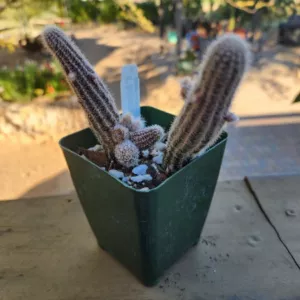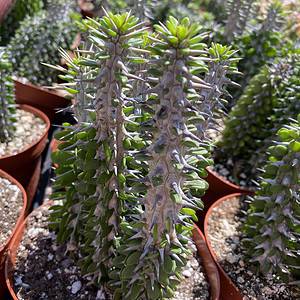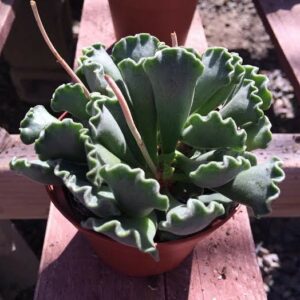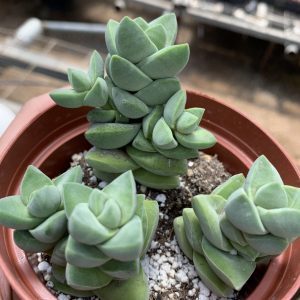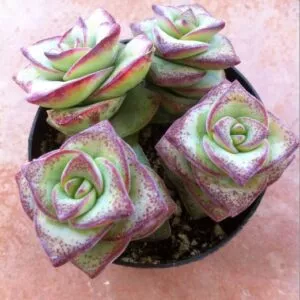Table of Contents
Has the gardening bug bitten you? Is your house looking like a jungle? Then you are the owner of a gorgeous plant collection. So, why not add another plant to your indoor collection that is spectacular and easy to care for the blue succulents?
The color display makes all the chosen look gorgeous yet elegant, ranging from dark blue with red tips to pale blue-grey shades. As a bonus, you get different shapes and sizes, gifting you bunches of tiny flowers in the rosette form.
Some Blue Succulents Plants For Your Indoor Collection

Here we have something for you if you love succulents. The only difference is that they are blue succulents that grow comfortably indoors and outside.
Agave potatorum (Butterfly Agave)

The Butterfly Agave is not only elegant, but it is a beautiful blue succulent native to Mexico. The plant is wide with blue-grey leaves growing up to 18-inches long. The foliage forms rosettes that are densely reaching two feet tall and three feet in diameter.
The Agave potatorum, when mature, blooms in summer, developing yellow, pale green flowers with red edges on 20 feet stalks. Once the flowers complete the blooming cycle, the plant dies but continues growing through offsets you can repot into individual pots.
It is a small plant and perfects to place in a sunny spot in the home. All it needs is six hours of bright sunlight a day. The rule of thumb is to only water when the soil is dry and provide it with nutrient-poor well-draining soil without fertilizer.
The blue Agave is a slow grower that will become the focal point in your living space. The best is it can thrive with some neglect as it does not enjoy being disturbed. Still, a note of warning is that the plant does have an irritating sap with very sharp spines.
Echeveria ‘Blue Prince’
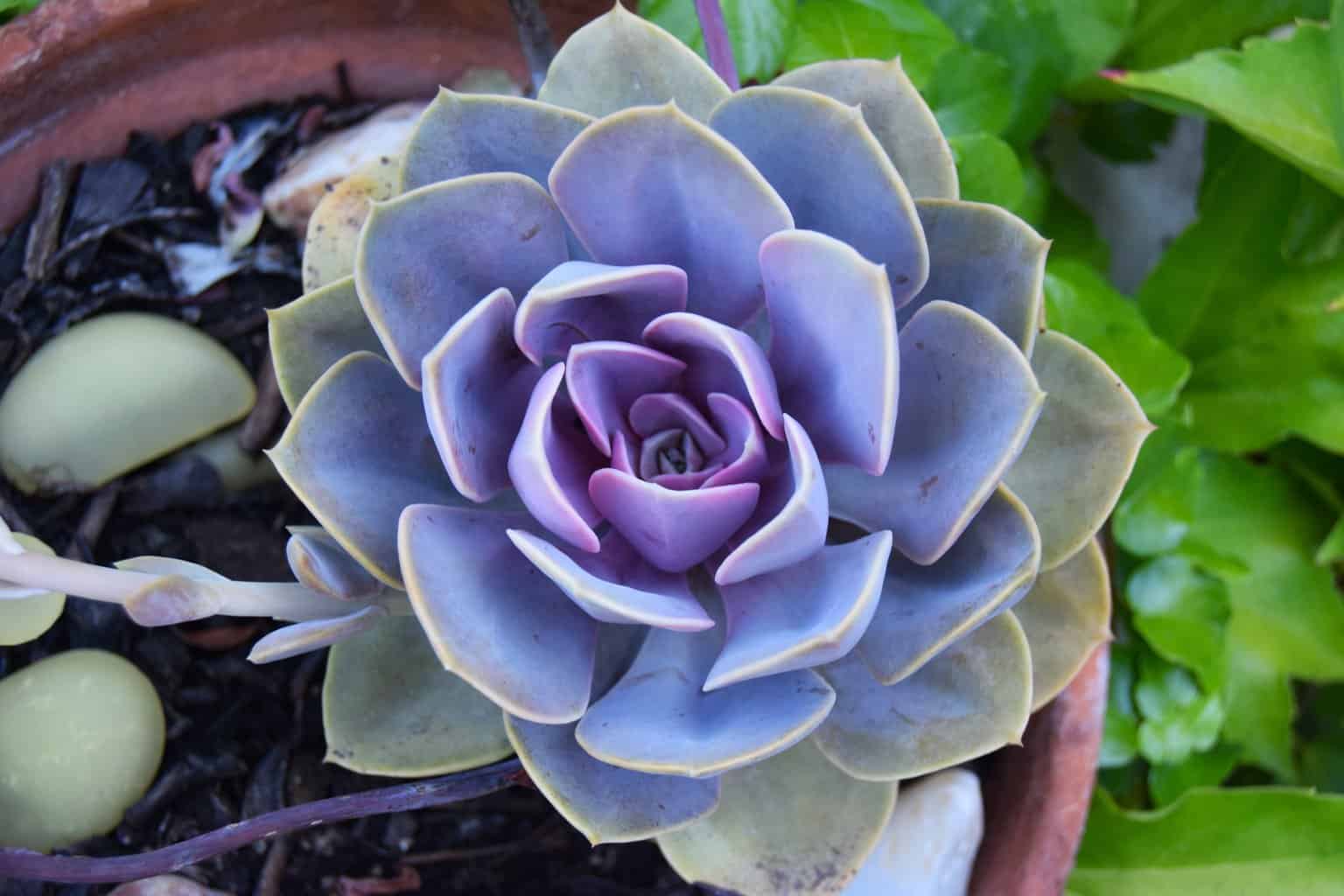
Another magnificent blue succulent from Mexico is the Echeveria blue prince. The blue succulent collection will become another focal point in the home. The plant grows flower-like leaves in a dark blue hue with red edges.
The thick fleshy leaves form a rosette coated with a powdery residue. When you grow the Echeveria blue prince in full sun, it remains compact with a very dense look and intense blue color.
The Echeveria blue prince looks excellent in containers and rock gardens, blooming from spring to summer. You see these beautiful tulip-shaped pink to red flower clusters on the tall stalks. These colorful succulents thrive in bright sunlight at a south-facing window. Still, if natural light is of concern, you can always use grow lights.
As with most succulent plants, they need well-drained soil with infrequent watering. We recommend a container with enough drainage holes to allow the excess water to drain out. While you can keep this gorgeous plant outdoors in summer, bringing it inside when it frosts is best.
Another highlight is that when these succulents grow, they produce offsets around the mother plant. When you leave the chicks to grow, it looks like a hen sitting with chicks. Hence the name hens and chicks.
Agave tequilana (Blue Agave)

One of the best-known blue succulents is the blue Agave with spectacular blue to green leaves. The Mexico plant grows four-foot-lanced leaves in blue-grey with a brown central spine full of sharp spines.
The tight clusters of leaves form a rosette growing six feet tall. The unexpected surprise is that it takes up to eight years to produce a 20-foot-tall stalk with green flowers and the stamens purple.
Unfortunately, once the bloom cycle completes, the plant dies. But the good news is the plant produces offsets you can remove from the mother plant to ensure you always have one available.
The plant needs full sun with high temperatures and is not cold or hardy. As with most succulents, it requires little water and well-drained soil with some coarse matter. And yes, it is the plant the Mexicans use to make tequila.
Sedeveria ‘Blue Borrito’ With Pink Tips

The Sedeveria blue burrito is one adorable hybrid succulent crossed between the Echeveria peacockii and Sedum morganianum. The bluish-green leaves have pink tips growing to form a rosette. The rosettes reach up to six inches wide and have trailing stems reaching 12-inches.
When you grow the Sedeveria blue burrito in a pot, it develops clumps of rosettes. The blue succulents need soil that is well draining and does well growing indoors. It requires the bright sun for six hours with little water.
Another common name for the plant is stonecrop, which propagates easily through stem cuttings and via seeds.
Senecio mandraliscae (Blue Chalkstick)

The Senecio mandraliscae blue chalksticks have another common name, blue fingers. The succulent is native to Southern Africa, and you find them growing in rock crevices. The foliage is a bright blue that looks like tiny fingers growing up to 18 inches tall.
These are beautiful blue succulents with a powdery coating known as farina. When in bloom, the blue chalksticks develop tiny white flowers in mid-summer that attract bees, hummingbirds, and butterflies.
The best place for growing the Senecio mandraliscae blue chalksticks is in a window where they can receive bright light for six hours. In addition, the plant can go without water for a long when growing in well-drained soil.
The best potting medium is a cactus or succulent mix and water when the soil is dry. These succulents spread with roots underground, creating a beautiful ground cover.
Echeveria ‘Blue Bird’
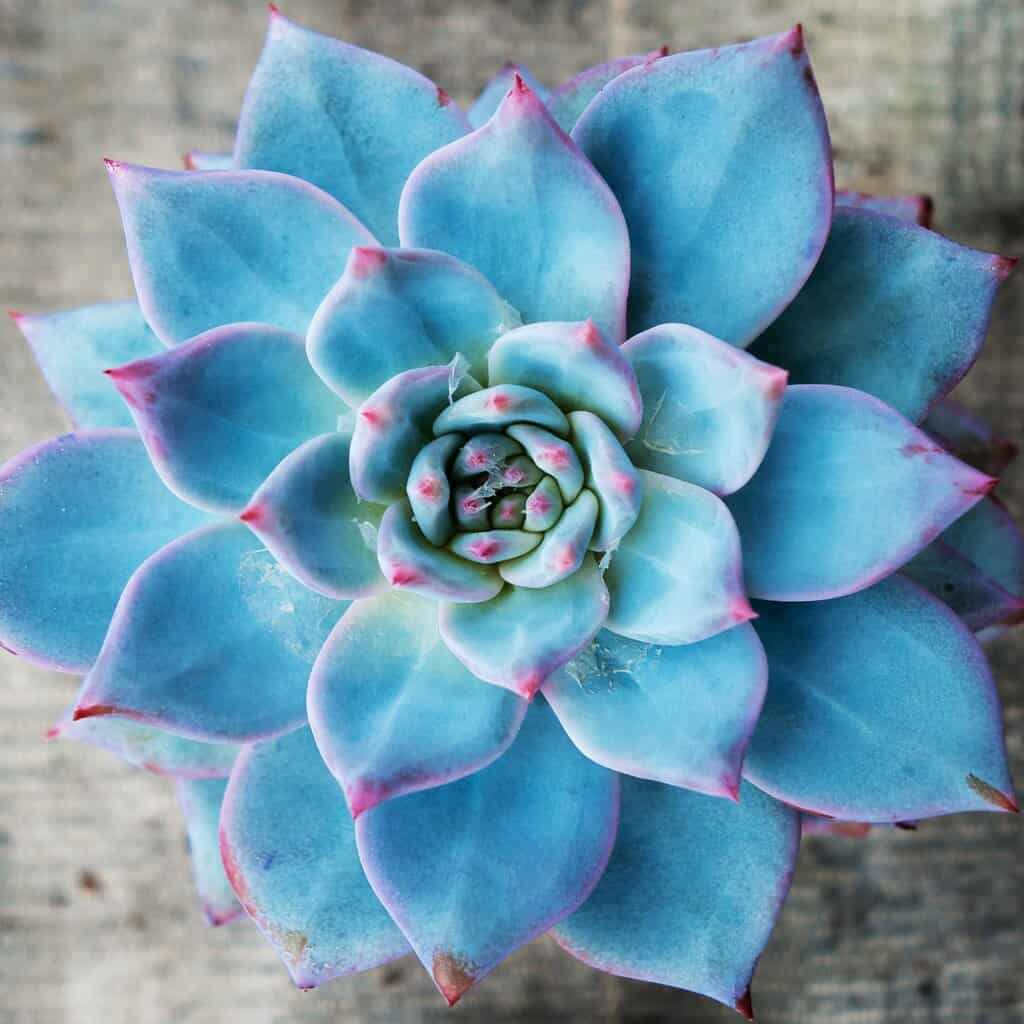
The Echeveria blue bird is a delicate succulent with tiny blue rosettes like flowers. The plant spreads, forming small clumps. One rosette in a pot can grow up to ten inches wide. The leaves are also covered with a powder to protect them from the sun.
The blue bird needs enough light and does well in full sun. The rule regarding watering is to let the soil dry completely. Also, provide the blue bird plant with soil that drains well and does not need fertilizing.
Sedum reflexum (Blue Spruce Stonecrop)
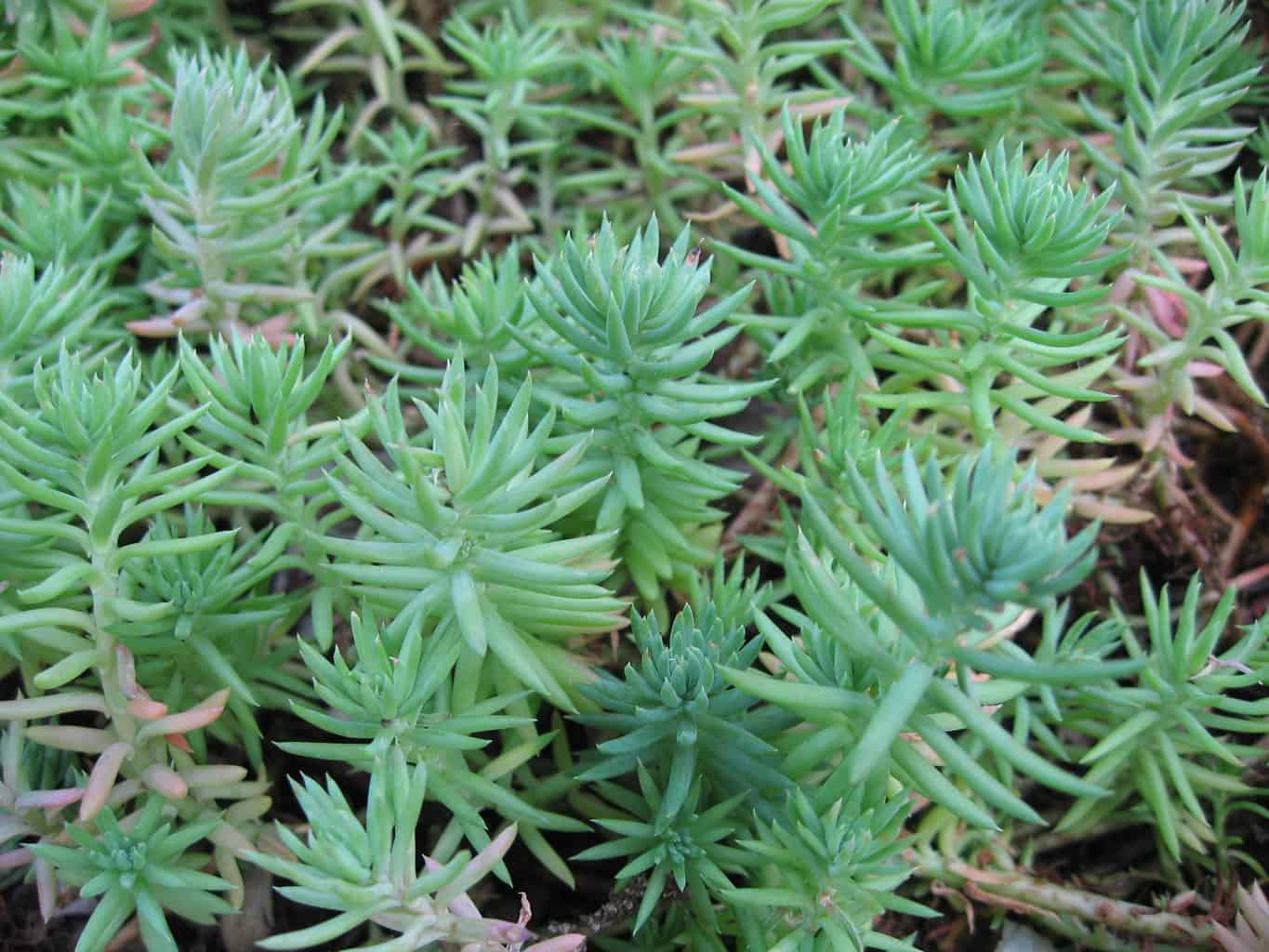
The blue spruce stonecrop is a very unusual evergreen succulent that grows as a perennial. The plant grows low, forming a mat with needle-like leaves in blue-green. The leaves grow on stems, making them look like spruce needles hence the name.
During summer, the blue spruce blooms with bright yellow flowers like stars. The plant is not demanding regarding caring as it needs little water, bright light, and full sun. When grown in rock gardens, it makes for a magnificent ground cover.
Still, grown indoors, it does need a sunny spot with free-draining soil.
Aloe ‘Blue Sky’

Another stunning blue succulent is the Aloe blue sky, which has pale blue leaves surrounded by orange spikes. At the hears of the rosette, the leaves are smaller, and it flourishes in full sun. The more sun the plant gets, the more vibrant the hues become, turning to blush pink.
As with any succulent plant, it needs minimal water only when the soil is dry. Also, allow the excess moisture to drain through the pot. These beautiful blue succulents bloom in spring and summer.
You are gifted with bright orange blooms that last until fall and attract hummingbirds and bees. Even propagating your plant is a breeze using the offsets when grown two inches tall.
Aloe Blue Elf
The evergreen hybrid succulent has narrow leaves that grow upright with tight rosettes in blue-grey. The edges of the leaves have orange spikes. It is a heat-loving plant that grows well in limited spaces.
The blue elf also looks fabulous with low-growing or spreading succulents and the orange stalks you see developing in winter to early spring. When offsets are left in the pot with the parent plant, you might end up with all of them blooming simultaneously.
The Aloe blue elf needs plenty of light for those blue leaves, and with enough sunlight, it also turns to a red tinge.
Corpuscularia lehmannii

The ice plant is one strange looking succulent with fleshy blue-green color leaves. The leaves have the shape of ice cubes hence the name ice plant. It can grow eight inches high, and during summer, it branches out with daisy-shaped yellow flowers.
It is another Southern African plant loving a hot, dry climate with a lot of warm sunlight. Only water when the soil is dry and throw out the excess water remaining from the pot. Another fantastic thing is you can quickly propagate your plant through branch cuttings.
Only 1 left in stock Only 1 left in stock In stock
$9.00
Sold By:
Stripes and Variegations
Peanut cactus
Sold By:
Stripes and Variegations
$10.00
Sold By:
Stripes and Variegations
4 inch Variegated Agave Isthmensis / “Dwarf Butterfly Agave
Sold By:
Stripes and Variegations
$31.99
Sold By:
Succulent Oasis
False Ocotillo Cactus
Rated 4.84 out of 5 based on 352 customer ratings00
Sold By:
Succulent Oasis
Pilosocereus azureus (Blue Torch Cactus)

Look no further than the blue torch cactus if you want something spectacular to grow in the garden or a container. Just look at those gorgeous silvery blue pillars with bright yellow spines.
As the succulent matures, the blue leaves get darker and look stunning. The cactus comes from Brazil and branches out like a tree. It is a fast-growing succulent reaching up to 33 feet high.
Yet, when grown indoors, it seldom reaches that height, and when planted outdoors, you will always have the babies present in the home. One thing about these blue succulents is that they are low-maintenance, needing full sun to partial sun in a hot, dry environment.
Another fascinating thing is the cactus blooms at night, producing large white flowers with fru
Final Thoughts
These blue succulents, with their blue leaves, you must agree, are gorgeous plants and must-haves in our homes. Be sure to check Plantly for blue succulent plants.
Whether you want to buy, sell or simply reach out to other plant enthusiasts, Plantly is the right place to be!
In stock In stock In stock In stock
$9.99
Sold By:
Succulent Oasis
Medium Succulent Plant – Key Lime Pie
Only 15 available and it’s in 1 people’s basket Rated 4.84 out of 5 based on 352 customer ratings02
Sold By:
Succulent Oasis
$10.00
Sold By:
Cacti and Exotica
Crassula Moonglow
Only 6 available and it’s in 3 people’s basket Rated 4.98 out of 5 based on 59 customer ratings00
Sold By:
Cacti and Exotica
$19.99
Sold By:
Succulent Oasis
$35.00Large Sedum Aurora also known as Jelly Beans
Rated 4.84 out of 5 based on 352 customer ratings00
Sold By:
Succulent Oasis
$9.99
Sold By:
Succulent Oasis
Medium Succulent Plant – Crassula Perforata String of Buttons
Only 36 available and it’s in 2 people’s basket Rated 4.84 out of 5 based on 352 customer ratings01
Sold By:
Succulent Oasis

